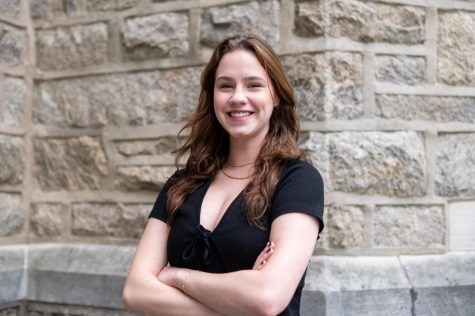University Conducts Survey About Sexual Violence
November 15, 2021
On Oct. 26, University President Rev. Peter M. Donohue, O.S.A., PhD sent an email to all undergraduate, graduate and law school students requesting them to complete the University’s Sexual Violence Climate Survey. Faculty and staff were also invited to take part in the survey.
The survey assists the University’s administration in assessing the environment on campus surrounding incidents of sexual violence. It was first sent out to students in 2015 and then again in 2018.
The survey was developed with EverFi, the corporation that also provides first year students with their Alcohol Education and Sexual Assault Education courses prior to orientation. EverFi utilized the White House Task Force to develop the survey. President Obama signed in the force in 2014 as a way to protect students against sexual violence.
In the email sent to all students, the Office of Strategic Planning and Institutional Effectiveness (OSPIE), emphasized that the survey is anonymous. OSPIE also reminded students in the email how important hearing from students is when addressing issues such as sexual violence on campus.
“By participating in this anonymous survey, you will provide critical insights to help protect and support Villanova students,” the email read. “This survey will allow Villanova to develop and enhance resources and response efforts related to sexual violence.”
The email also contained instructions for students who wished to complete the survey. Students were encouraged to complete the survey in a private space. In addition, the email advised students to not share the unique survey link or give anyone access to a Villanova email account. Participants were also advised to close their web browser when the survey was completed.
The survey contains five sections including four core sections and one that is randomly assigned. Students can expect to take between 15 and 30 minutes to complete the survey depending on the length of their responses. Due to the sensitive questions in the survey, students are no required to answer all questions and may exit the survey if they have any discomfort while participating.
According to Ryan Rost, the Title IX Coordinator, the University experienced an increase in response rate from the 2015 to 2018 survey. In 2015, 30% of undergraduate students participated and in 2018 33% did. Rost is optimistic the trend will continue this year and the University will see an increase in the number of students who choose to complete the survey.
EVERFI advised the University that any response above 20% will provide the administration with reliable data.
To hopefully increase the number of students responses this year, the University utilized social media accounts to spread the word. It’s On Us Nova was one Instagram account that partnered with the University to promote the survey.
Rost explained that in September a focus group was conducted among students to enhance the survey this year. One of the key takeaways from the group was promoting the survey via social media.
The Title IX Coordinator also explained that in past surveys there were patterns identified by the University. Among the trends seen was the common occurrence for first year students to have a negative experience. In the survey, experience can be defined as “non-consensual or unwanted sexual contact.”
A time period known as the “Red Zone,” which refers to the first six to ten weeks students are on a college campus, was identified as time to be extra careful about. This time is nationally known as a more vulnerable time period for incoming students as they adjust to independence in college.
In the 2015 survey results it was noted that 57% of experiences reported by females were from first year students.
Other trends can be found in the reports, which are released for all University students or staff to read. The results can be found through MyNova.
The University takes such findings and evaluates as much of the data as they can. Then the administration decides what resources they can provide or increase to address student concerns. Policies may also be added or amended in order to better the climate on campus.
In recent years, the University has look closer at identifying which groups may be more at risk of having negative experiences. This includes the categories of gender, race, ethnicity and sexual orientation.
One of the many issues the University faced after the 2015 results were evaluated included individuals not telling anyone about their negative experiences.
In order to address this issue, the Office of Health Promotion increased resources and prevention efforts. The office also worked with the Sexual Assault Resource Coordinator (SARC) to increase education and events for students. After these changes were implemented, in the 2018 survey, the school saw a decrease in female students who chose to not tell anyone of their experience.
“We want to eliminate experiences of unwanted sexual contact within our community. But if they do occur, we do not want students to go through their healing alone,” Rost said. “We want an increase in confidence of survivors that if they tell someone about their experience, they will be supported.”
Overall, the survey is one of the many ways for the University to hear directly from students. Rost encourages all students to participate regardless of whether they have personally been a victim of sexual violence.
“This is one of the many ways students can have a voice as it relates to a very important topic nationwide and specifically at Villanova,” Rost said. “We want to hear their voice if they did not have an experience unwanted or non-consensual sexual contact, their voice is still important.”
Any student who wishes to speak to someone or access on and off campus resources can visit www.villanova.edu/sexualassault or speak to a member of the SARC team.


